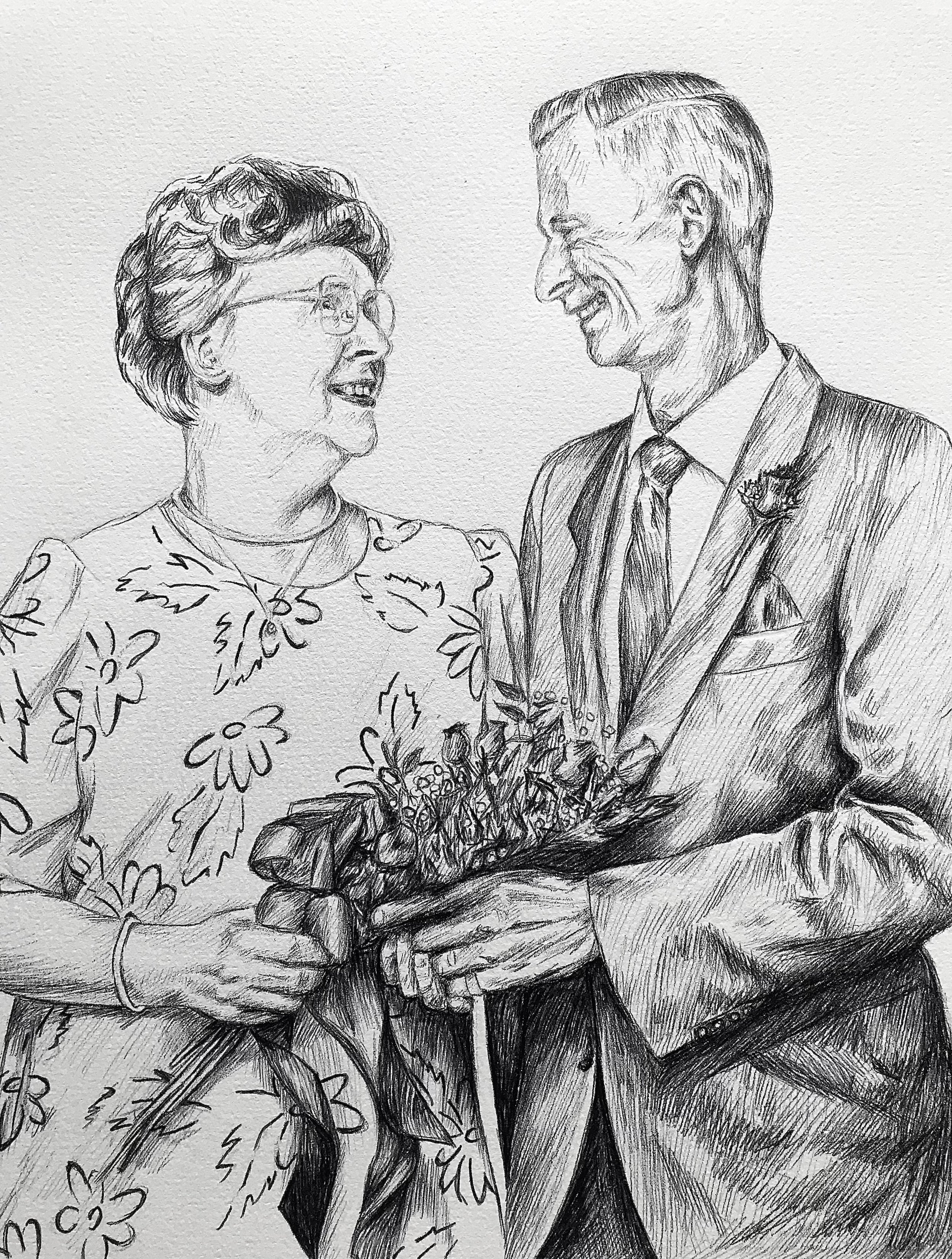Building passion for creation: An interview with Rachel Stratton
Rachel was a student at the University of Sheffield and is now based in Bristol.
Describe your art style. What medium do you use the most?
‘I’m versatile. I find that I don’t often stick to certain mediums; I use a few different things. If I’m fine-line drawing people: I’ll use a pen to show realism, if I’m creating landscapes I’ll nearly always use oil paints. So it does depend what I’m doing, but I think my favourite medium would be oil paints - to keep a certain looseness. I love paintings with texture, I used to love using a palette knife to keep the paint thick to create movement. To create a sensory landscape, to make it look like the painting is actually sandy or rocky.’
Oil painting of St Anthony-in-Meneage by Rachel.
What motivated you to start creating art?
‘My mum has always really liked art; randomly, my godfather is an artist and has always given me loads of tips and free stuff. So I think it has always been a natural, running theme since when I was a child. I did art GSCE and at A-level, then an art foundation diploma just before I went to uni. I’m so glad I got to do the diploma. I got to try loads of different stuff like ceramics and other random styles of art. It was really fun, but then I realised art would be more of a side hobby, instead of a degree. It was an area of relaxation and self-expression, where I’m more of a STEM-orientated student.’
Do you think it is important to have a meaning behind art, or is it just something to do for fun?
'I love it when you go to art galleries and they actually give a plaque explaining the art, and I’ll often find it a bit frustrating when art is abstract - yes it looks cool, but what is it trying to tell me? I connect more with art when it has a meaning, as you get more of a glimmer and an insight into what the artist was thinking.
I enjoy the open interpretation of paintings in art galleries and delving into them, but I prefer the certainty of being told for sure what the painter was aiming for. That’s the science part of my brain haha.’
Then, why do you find yourself drawn to painting landscaPes? Does it creare your subjective view of an area?
‘I do quite a lot of seascapes. My mum is Cornish so I go there a lot. Therefore, a lot of my art is Cornish landscapes, places I know well or that mean a lot to me. There is an artist, Kurt Jackson, who does loads of landscapes and scribbles words at the bottom of his paintings - like something he heard someone say when painting - and it just provides an extra layer of understanding for the viewer. You get the painting more, and that’s what I value. The individual experience.’
What would you want people to take away from your art?
‘When I draw people, I try to capture their resemblance and their essence, try to project their personality out of the piece. Landscape-wise? I try to present the place through my own eyes: I really like the idea of showcasing places when it isn’t at its sunniest or nicest, for instance, a lot of places that I go to in Cornwall I go throughout the year so I know what it looks like through different seasons and weathers. I like to depict the authenticity of a British landscape where, more likely than not, it's going to be grey. I only create when inspiration strikes, I feel like I can't force myself when the timing doesn’t feel right. I like to show authenticity for those who can appreciate it.’
What would your advice be to those starting out? To take advantage of when you feel inspiration strike?
‘Yes, definitely! I hear a lot of people say that they keep meaning to do it [start out], so much so that it becomes a chore. I find it easier to surround yourself with your inspiration, which is a lot easier to do with landscapes. Go out for a walk somewhere you think is cool and think to yourself I could try and emulate this.
But then again, If you are super new to art and creating, people go into it with an idea of what they want their end product to look like - and so often art does not come out as you planned in your head, leaving you disappointed. The art I enjoy creating the most is when I haven’t got a picture in front of me I’m trying to emulate meticulously; instead, I just think back about what I found cool about the colours or the textures and just try.
You need to experiment and explore. Although I know art supplies are expensive and not necessarily the most accessible, becoming creative with your resources is important. I love collaging in particular, it is so fun. Most people have access to magazines, and people are surprised that you can create through collaging.’
Digital Illustration of CVP by Rachel.




